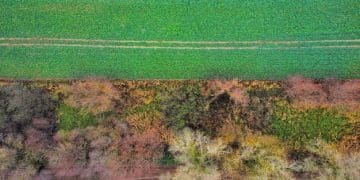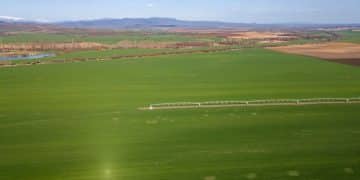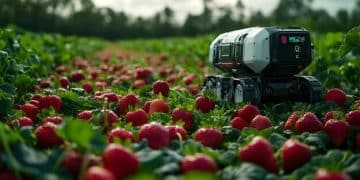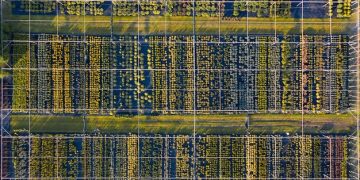Precision Irrigation: Boosting Crop Yields by 15% in 2025
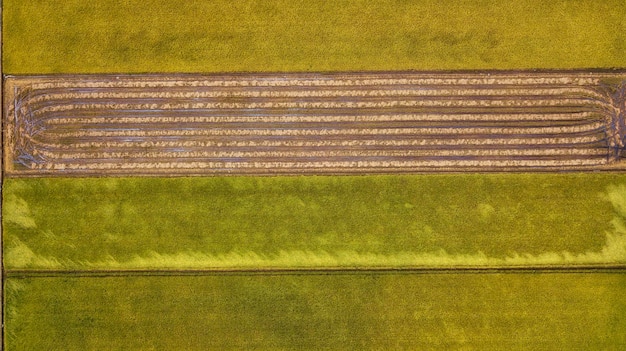
Precision irrigation can potentially increase crop yields by 15% in 2025 through strategic water management using advanced technologies like sensors, weather data, and automated systems, optimizing water use and reducing waste.
Can how can precision irrigation increase crop yields by 15% in 2025? Precision irrigation offers the promise of more efficient and effective water use in agriculture, particularly important as water resources become increasingly scarce. But how can this technology realistically deliver a 15% increase in crop yields within the next few years?
Understanding Precision Irrigation
Precision irrigation is a cutting-edge approach to water management in agriculture. It involves delivering water to crops in a precise and controlled manner, optimizing water use and minimizing waste. This method relies on a combination of advanced technologies and data-driven strategies.
Unlike traditional irrigation methods that often apply water uniformly across an entire field, precision irrigation tailors water delivery to the specific needs of different areas within the field. This targeted approach ensures that each plant receives the right amount of water, leading to improved crop health and increased yields.
Key Components of Precision Irrigation
Precision irrigation systems are composed of several key components that work together to optimize water use and deliver water precisely where it is needed.
- Sensors: These devices monitor soil moisture levels, weather conditions, and plant health. The data collected by sensors is used to determine the optimal irrigation schedule and amount.
- Weather Data: Real-time weather data, including temperature, humidity, and rainfall, is integrated into the irrigation system to adjust water delivery based on environmental conditions.
- Automated Systems: These systems use data from sensors and weather forecasts to automatically control irrigation equipment, such as drip lines and sprinklers.
- Data Analytics: Sophisticated software analyzes the data collected by sensors and weather stations to provide insights into crop water needs and optimize irrigation strategies.
By integrating these components, precision irrigation systems can deliver water with a high degree of accuracy, reducing water waste and improving crop yields.
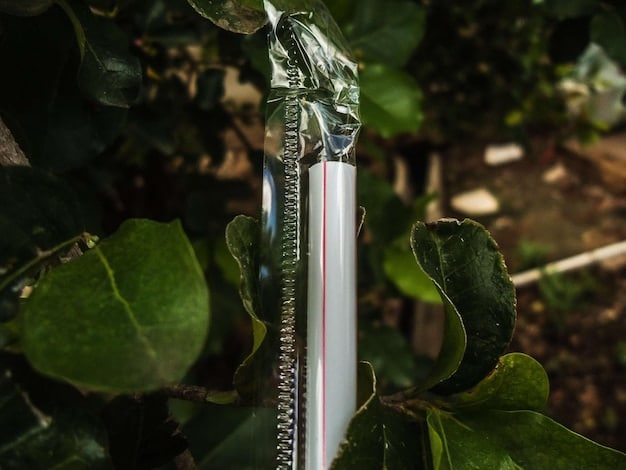
In conclusion, precision irrigation is an innovative approach that leverages technology and data to enhance water management in agriculture, ensuring efficient and effective water delivery to crops.
Current Irrigation Methods and Their Limitations
Traditional irrigation methods, while widely used, often suffer from inefficiencies and limitations that can negatively impact crop yields and water conservation efforts. Understanding these limitations is crucial to appreciating the benefits of precision irrigation.
Common irrigation methods include surface irrigation, sprinkler irrigation, and flood irrigation. Each of these methods has its own set of drawbacks, ranging from uneven water distribution to excessive water waste.
Drawbacks of Traditional Methods
Traditional irrigation methods are often associated with several key issues:
- Uneven Water Distribution: Surface irrigation methods, such as flood irrigation, often result in uneven water distribution across the field. Some areas may receive too much water, while others may not receive enough.
- Water Waste: Sprinkler irrigation can lose significant amounts of water through evaporation, especially in hot and windy conditions. Flood irrigation also leads to significant water loss through runoff and deep percolation.
- Energy Consumption: Pumping water for irrigation can be energy-intensive, especially for sprinkler and flood irrigation systems.
- Environmental Impact: Over-irrigation can lead to soil erosion, nutrient runoff, and groundwater contamination. It can also contribute to water scarcity in regions where water resources are limited.
These limitations highlight the need for more efficient and sustainable irrigation practices that minimize water waste and optimize crop yields.
In summary, traditional irrigation methods have several limitations that can negatively impact crop yields and water conservation efforts. By addressing these limitations, precision irrigation offers a more sustainable and efficient approach to water management in agriculture.
Technologies Driving Precision Irrigation
Precision irrigation relies on a variety of advanced technologies that enable precise water delivery and optimal water management. These technologies include sensors, automated systems, and data analytics tools.
By integrating these technologies, precision irrigation systems can monitor soil moisture levels, weather conditions, and plant health in real-time, allowing for data-driven irrigation decisions.
Sensor Technology
Sensors play a crucial role in precision irrigation by providing real-time data on soil moisture levels, weather conditions, and plant health. This data is used to optimize irrigation schedules and amounts.
- Soil Moisture Sensors: These sensors measure the amount of water in the soil, providing valuable information on when and how much to irrigate.
- Weather Stations: Weather stations collect data on temperature, humidity, rainfall, and wind speed, which can be used to predict crop water needs.
- Plant Health Sensors: These sensors monitor plant health indicators, such as leaf temperature and chlorophyll levels, to detect signs of water stress and adjust irrigation accordingly.
Sensor technology enables farmers to make informed irrigation decisions based on real-time data, leading to improved water use efficiency and crop yields.
Automated Irrigation Systems
Automated irrigation systems use data from sensors and weather stations to automatically control irrigation equipment, such as drip lines and sprinklers. This automation ensures that crops receive the right amount of water at the right time.
Automated systems can be programmed to adjust irrigation schedules based on weather forecasts, soil moisture levels, and plant health data. They can also be remotely monitored and controlled, allowing farmers to manage irrigation from anywhere with an internet connection.
Data Analytics and Software
Data analytics and software tools play a crucial role in processing and interpreting the vast amounts of data collected by sensors and weather stations. These tools provide insights into crop water needs and optimize irrigation strategies.
By analyzing historical data, weather patterns, and crop performance, data analytics tools can help farmers predict future water needs and make informed irrigation decisions. This can lead to significant improvements in water use efficiency and crop yields.
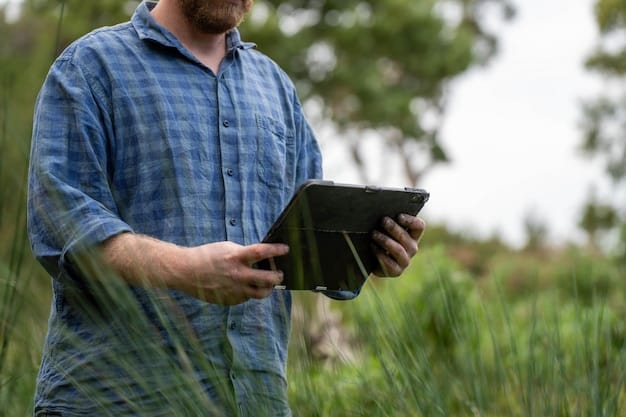
In conclusion, precision irrigation relies on a combination of sensor technology, automated systems, and data analytics tools to enable precise water delivery and optimal water management.
Achieving a 15% Increase in Crop Yields
The goal of achieving a 15% increase in crop yields through precision irrigation is ambitious but achievable with careful planning and implementation. Several factors contribute to the potential for increased yields.
By optimizing water delivery, reducing water waste, and minimizing water stress, precision irrigation can create ideal growing conditions for crops.
Optimizing Water Delivery
Precision irrigation ensures that crops receive the right amount of water at the right time, minimizing water stress and maximizing growth potential.
- Reduced Water Stress: By providing a consistent and reliable water supply, precision irrigation can reduce water stress in crops, leading to improved plant health and increased yields.
- Optimal Growing Conditions: Precision irrigation creates optimal growing conditions by providing the right amount of water and nutrients, allowing crops to reach their full potential.
- Improved Nutrient Uptake: Proper irrigation can improve nutrient uptake by plants, as water is essential for transporting nutrients from the soil to the roots.
Reducing Water Waste
Precision irrigation minimizes water waste by delivering water directly to the roots of plants and reducing evaporation and runoff.
By reducing water waste, precision irrigation can help conserve water resources and lower irrigation costs.
Monitoring and Adjustments
Regularly monitoring crop health and adjusting irrigation schedules based on weather conditions and plant needs is essential for achieving optimal results.
By monitoring soil moisture levels and plant health indicators, farmers can fine-tune their irrigation strategies to maximize crop yields.
Challenges and Considerations
While precision irrigation offers numerous benefits, there are also challenges and considerations to keep in mind when implementing these systems. These challenges include initial costs, technical expertise, and data management.
Addressing these challenges requires careful planning, training, and ongoing support.
Initial Costs
The initial investment in precision irrigation equipment and infrastructure can be significant. This includes the cost of sensors, automated systems, and data analytics software.
However, the long-term benefits of precision irrigation, such as increased yields and reduced water costs, can offset the initial investment over time.
Technical Expertise
Implementing and maintaining precision irrigation systems requires technical expertise in areas such as sensor technology, data analytics, and irrigation engineering.
Farmers may need to invest in training and education to develop the necessary skills, or they may need to hire consultants or technicians with expertise in precision irrigation.
Data Management
The vast amounts of data collected by precision irrigation systems can be overwhelming. Farmers need to have the tools and expertise to manage and interpret this data effectively.
Data analytics software and cloud-based platforms can help farmers organize and analyze their data, providing insights into crop water needs and irrigation strategies.
Case Studies and Success Stories
Several case studies and success stories demonstrate the potential of precision irrigation to increase crop yields and improve water management. These examples provide valuable insights for farmers considering adopting precision irrigation.
These case studies show that precision irrigation can be successfully implemented in a variety of crops and regions.
California Almond Growers
Almond growers in California have achieved significant water savings and yield increases by implementing precision irrigation systems. By monitoring soil moisture levels and adjusting irrigation schedules based on weather conditions, they have been able to reduce water use by as much as 20% while increasing yields by 10-15%.
Florida Citrus Farmers
Citrus farmers in Florida have used precision irrigation to optimize water and nutrient delivery to their trees. By installing soil moisture sensors and automated irrigation systems, they have been able to reduce water use and improve fruit quality.
Midwest Corn and Soybean Farmers
Corn and soybean farmers in the Midwest have used precision irrigation to mitigate the effects of drought and improve yields. By monitoring soil moisture levels and adjusting irrigation schedules based on weather forecasts, they have been able to increase yields by as much as 15-20% in dry years.
| Key Aspect | Brief Description |
|---|---|
| 💧 Water Optimization | Deliver water precisely when and where needed. |
| 🌱 Yield Boost | Achieve up to 15% yield increase by 2025. |
| 📊 Data Analytics | Use data to predict needs and improve irrigation. |
| 💰 Cost-Effective | Reduces water and energy costs over time. |
FAQ
▼
Precision irrigation is an advanced method of water management that delivers water to crops in a precise and controlled manner, optimizing water use and minimizing waste.
▼
By optimizing water delivery and nutrient uptake precision irrigation reduces water stress and creates ideal growing conditions, allowing crops to reach their full potential.
▼
Key components include sensors, weather stations, automated systems, and data analytics tools that work together to monitor and adjust irrigation based on real-time data.
▼
Challenges include initial costs, the need for technical expertise in data management, and the ability to properly interpret complex data from sensors and weather stations.
▼
Success stories include almond growers in California, citrus farmers in Florida, and corn and soybean farmers in the Midwest, all of whom have seen improved water use and yields.
Conclusion
Achieving a 15% increase in crop yields through precision irrigation by 2025 is a realistic goal with the adoption of advanced technologies and data-driven strategies. By optimizing water delivery optimizing costs and addressing the challenges, farmers can improve yields and promote sustainable agriculture.
